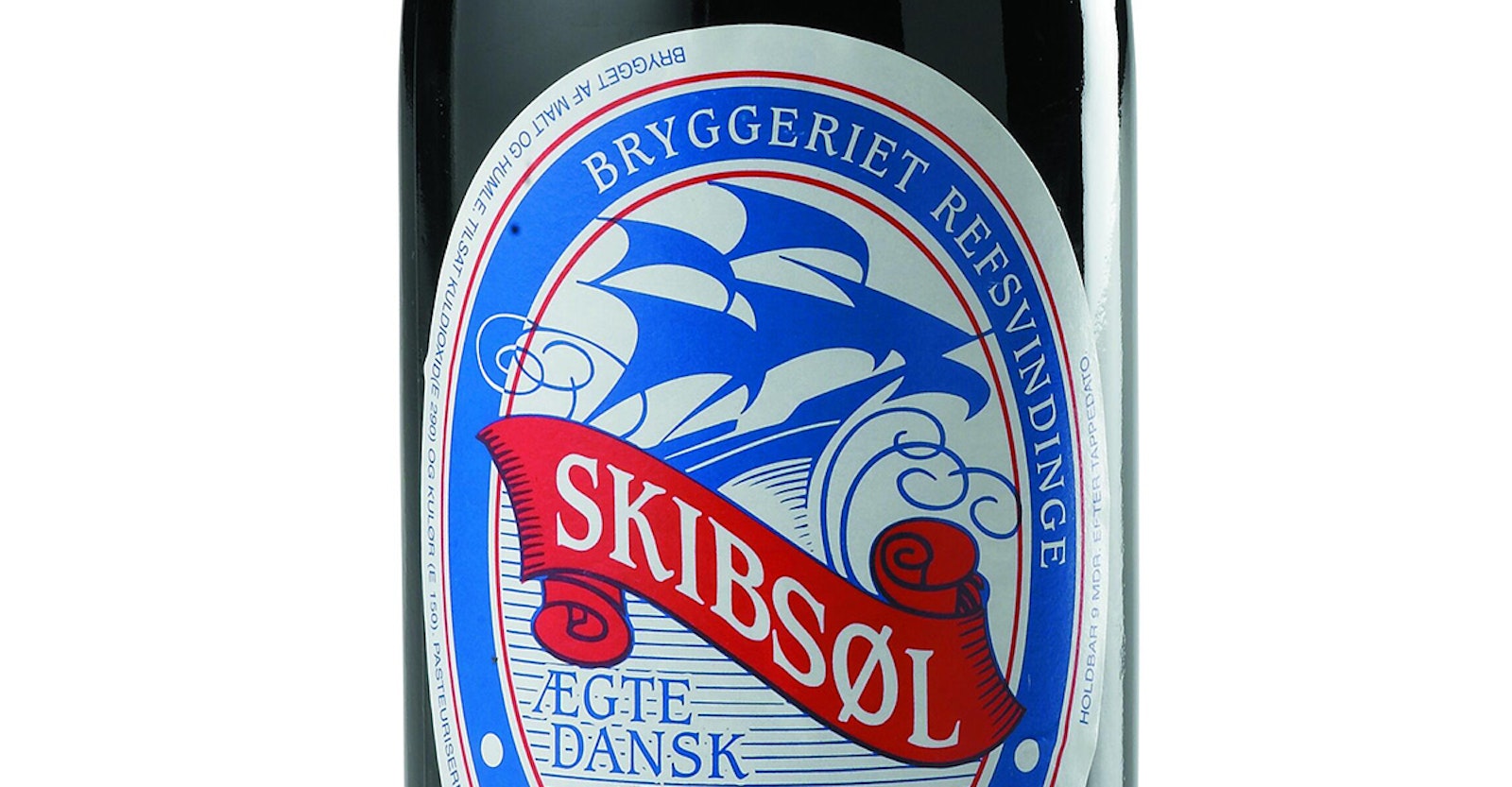On the Danish island of Funen, the small town of Nyborg—population 17,525—is best known for Nyborg Castle, first built in the 12th century and historically important: A Danish king signed the country’s first constitution here, and its first parliament convened here, both in the 13th century.
The castle survives in Nyborg, and so does another Danish tradition: brewing skibsøl. Nyborg is the home of family-owned Bryggeriet Refsvindinge, founded in 1885—originally as a farm and malthouse to supply other local breweries. Its own beers followed soon after, including those brewed from their own smoked malts.
Skibsøl isn’t even close to being Refsvindinge’s most successful beer—that would be No. 16, an easygoing brown ale of 5.7 percent ABV. About 20 years ago, Ale No. 16 was one of Denmark’s best-known craft beers, and it maintains a following. Today, Refsvindinge brews a range of accessible ale and lager styles, both modern and traditional.
The brewery made skibsøl in the old days—and it revived the style with a new recipe in 1994. That beer is 2.4 percent ABV, top-fermented, and made entirely with their own beechwood-smoked malts. They don’t sell much of it, but they keep brewing it anyway as an act of historical preservation.
Anne Skjødt Bang—part of the fifth generation to operate the brewery since her great-great-grandfather Hans Poul Rasmussen started it—says the skibsøl recipes have varied over the years, but they’ve always been low in alcohol. She describes the beer’s intensity: “The aroma is very smoked, like the way your clothes would smell after spending a night around the bonfire. Also, you notice a bit of sweetness, but the smoke pretty much dominates the aroma of the beer. The flavor is also mostly smoke, with a very subtle bitterness at the end and a bit of sweetness in the mouth.”
Refsvindinge buys barley for malting from local farmers. Skjødt Bang says they put 500 kilograms (1,100 pounds) in a large water tank for two days, changing the water once. Then they spread out the barley on the malting floor in a relatively thin layer, turning it by hand three times a day. “We throw it into the air using a wooden shovel, making sure all of it gets plenty of air,” she says. “After four days, we put it in a room with a grate as the floor. Here it gets smoked using beech. The oven we use has a long chamber to make sure the flames don’t reach the malt, so that only the smoke will pass the grate. Here it stays for two days.”
When brewing skibsøl, Refsvindinge adds its hops to the boil—Perle, to the tune of about 15 IBUs. The yeast is a dried English ale strain; the particular strain may not be all that important since the predominant trait of the finished beer is that intensely smoky character.
“Be critical selecting the smoked malt that you want to use for your beer,” Skjødt Bang says. “Since the taste and aroma are dominated by the smoked malt, it is important to select one that you like.”
And, she adds, skibsøl is not for everyone: “Have a backup beer in the fridge to offer to your guests!”
An American Take on Skibsøl
As rare as skibsøl is in Denmark, it’s even rarer abroad. Nevertheless, Right Proper took a stab at the style in 2015 at its brewpub in the Shaw neighborhood of Washington, D.C.
“We have always been super-fascinated with flavorful beers that are also low in alcohol,” says Right Proper cofounder Thor Cheston. One of the brewery’s mainstays, for example, is Ornette, a grisette of 3.7 percent ABV. “We took a lot of inspiration from historic recipes for farm beers, ship’s beers, table beers, etcetera.”
Untappd scores and local press clippings suggest that Right Proper Skibsøl was well received. “If I remember, it was pretty popular among us nerds,” Cheston says. “It was a fun, low-alcohol beer with a huge mouthfeel and bursting with complex malty flavor.”
The head brewer at the time was Nathan Zeender, who was deeply interested in farmhouse and traditional beers and had a free hand to pursue them. In May 2015, a post on the national security–focused website War on the Rocks—because, hey, this is D.C.—featured an interview with Zeender about his interest in historically inspired recipes, including skibsøl.
In the interview, Zeender explains that in 2009 he was traveling in New England with his friend Michael Tonsmeire—author of American Sour Beers and, more recently, cofounder of Sapwood Cellars in Columbia, Maryland. In the Boston area, they stopped at a barbecue joint called Redbones, where there was a highly unusual beer on tap called Imperial Skibsøl. As it turned out, the beer was a collaboration between Will Meyers of Cambridge Brewing and Anders Kissmeyer, a well-known Danish brewer who at that time was still with Nørrebro Bryghus. According to an online listing from that time, their Imperial Skibsøl was 6.3 percent ABV.
That beer was what inspired Zeender to find out more about skibsøl—and to eventually brew a version whose strength is closer to the historical standard.
At Right Proper, Cheston was able to dig up the grain bill from Zeender’s Skibsøl brew day in 2015. In that brew, about one-third of the grist is smoked malt—mostly beechwood, with some cherrywood-smoked, too—with a roughly equal portion of pilsner malt to form the base. The rest is layers of specialty malts, including rye, Caramunich, chocolate malt, and oats. While not traditional, it’s a recipe that might have broader appeal than one brewed with 100 percent smoked malt. (And we have the recipe here.)
These days, Zeender is making wine and cider at Rocklands Farm in Poolesville, Maryland—and his side projects include the occasional hopped cider or wine. “I’ve always had a sort of soft spot for old folk beverages,” he says, “so skibsøl pressed all the buttons.”

